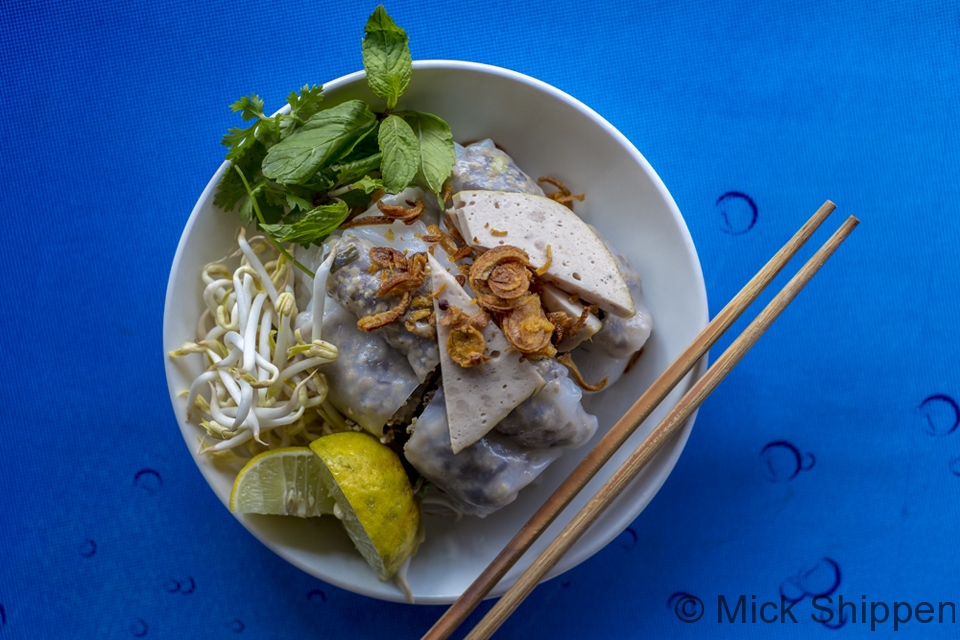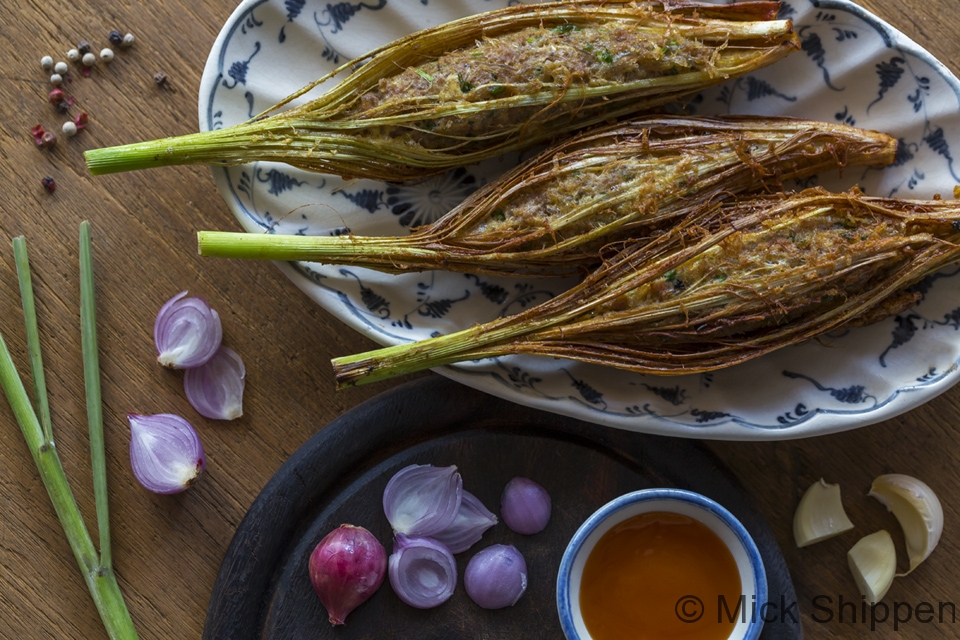
Lao food gets a bad press, and I think it’s undeserved. Granted, the competition from neighbouring Thailand and Vietnam is stiff but there’s certainly plenty of delicious and interesting food worth discovering in landlocked Laos.

Unfortunately the restaurant scene hasn’t really developed and until relatively recently very few people went out to eat. Most of the country’s best cooks, therefore, are in the home. In the last few years a few night markets have popped up in Vientiane with home cooks selling a wide variety of jaew or dips, curries, soups and grilled meats and fish. This is where you will find the best food. Restaurant menus on the other hand still tend to be limited to standard fair with uninspired and oversized portions prepared with little care.
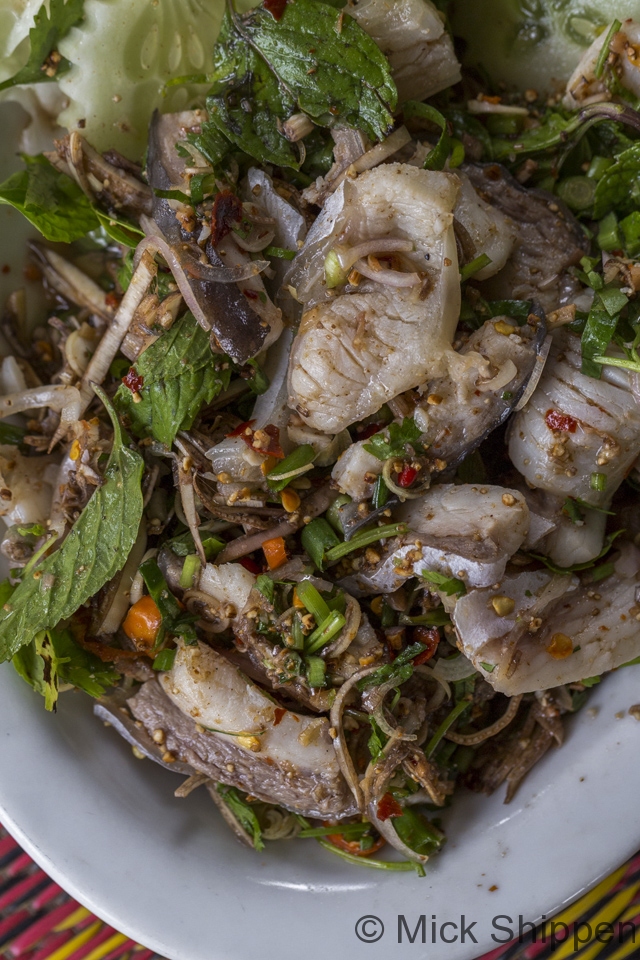
In common with northern and northeast Thailand, Lao eat mainly glutinous rice, a malleable steamed grain served at the table in woven baskets, although boiled fragrant rice is also eaten. Central to the Lao diet is a wide variety of freshwater fish which are steamed, grilled and fried, or made into a salad called goy pla. It is similar to the Thai laap and made with chopped river fish tossed in lime juice, dried chillis, fish sauce, toasted rice powder and herbs. A fermented fish paste known as pla daek is also used to flavour many dishes.
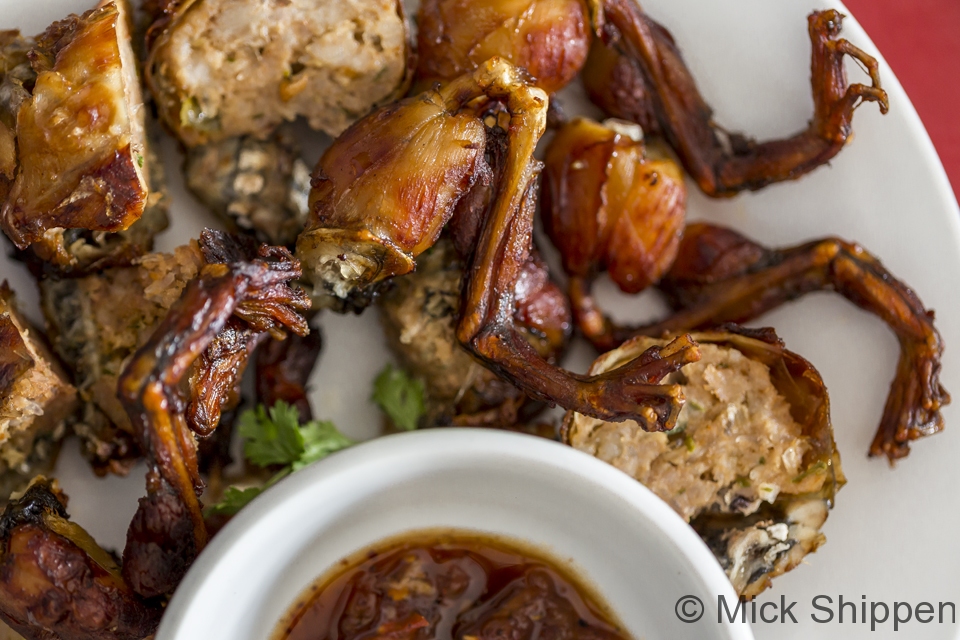
In Luang Prabang, regional dishes include the delicious aw laam, a kind of vegetable stew thickened with broken sticky rice and gently spiced with the addition of pieces of mai sakarn or pepperwood. It is traditionally made and at its best using dried buffalo meat but pork is also common (as is smoked and dried bamboo rat further north). There’s also sin savan, thin slices of sun-dried beef served with jaew bong, a roasted chilli paste, ua si khai, lemongrass stuffed with pork, gaeng som, a popular vibrant spicy and sour soup with fish, and stuffed frog.

The culinary landscape of Laos is no less effected by its past than is its architecture or its politics. In the late 60s and 70s, during the American war on Vietnam, many Vietnamese sought refuge in Laos. Today, the culinary tradition that they brought with them is very much part of the Lao food scene.
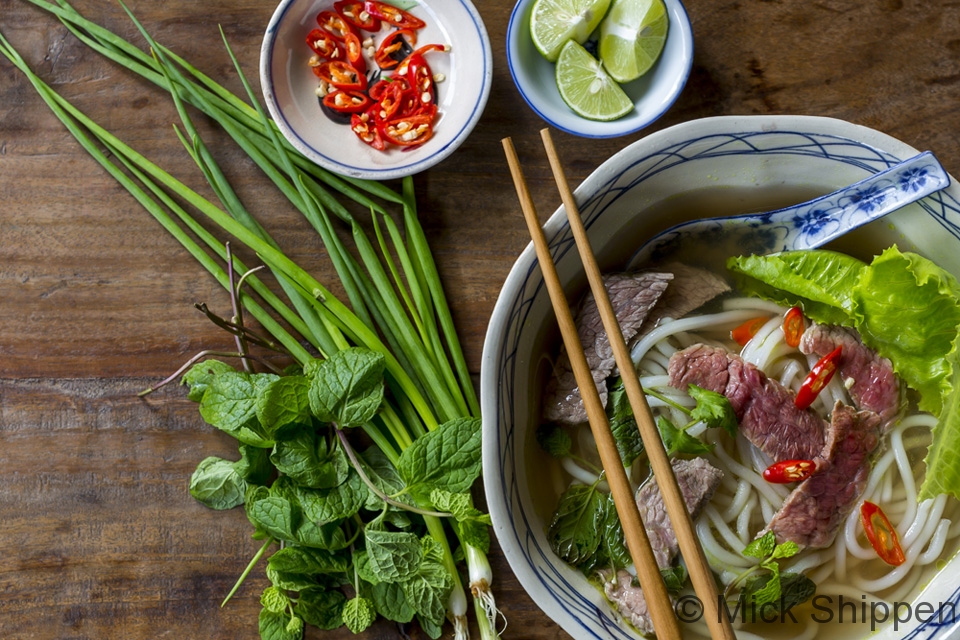
Vietnamese dishes include the ubiquitous pho, a comforting noodle soup of beef, buffalo, pork or chicken with liberal additions of fresh herbs and vegetables and, of course, fiery chillis, and many other noodle dishes.
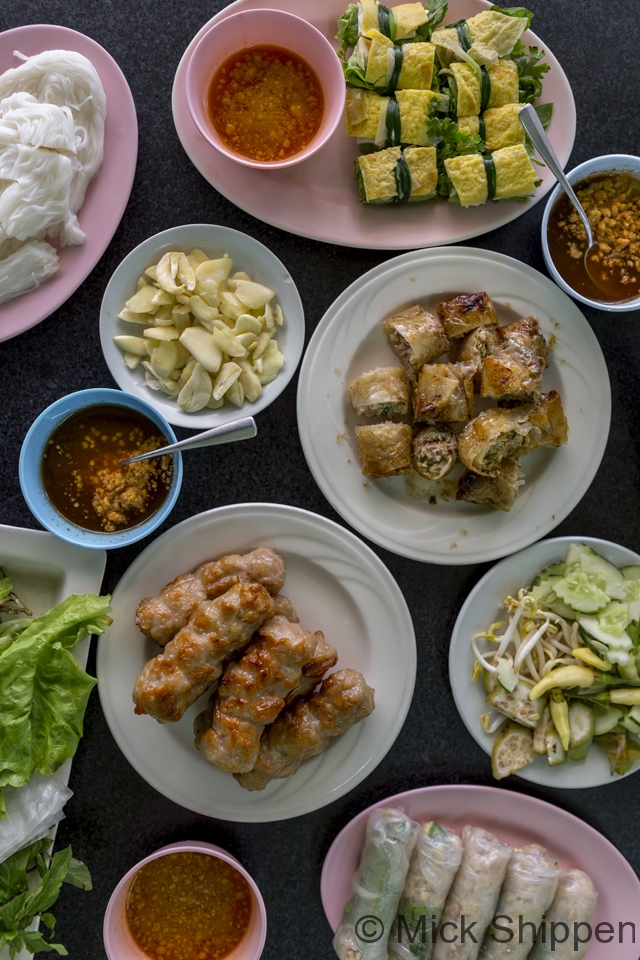
Vietnamese favourites also include naem neaung, tasty little ‘do-it-yourself’ rice paper wraps to fill with grilled pork balls, lettuce and herbs, ban cuan, steamed rice flour sheets stuffed with pork and mushrooms and yor kao and yor jeun, fresh and fried spring rolls.

If you are interested in learning more about Lao food, the book Traditional Recipes of Laos by Phia Sing published by Prospect Books is worth getting.
